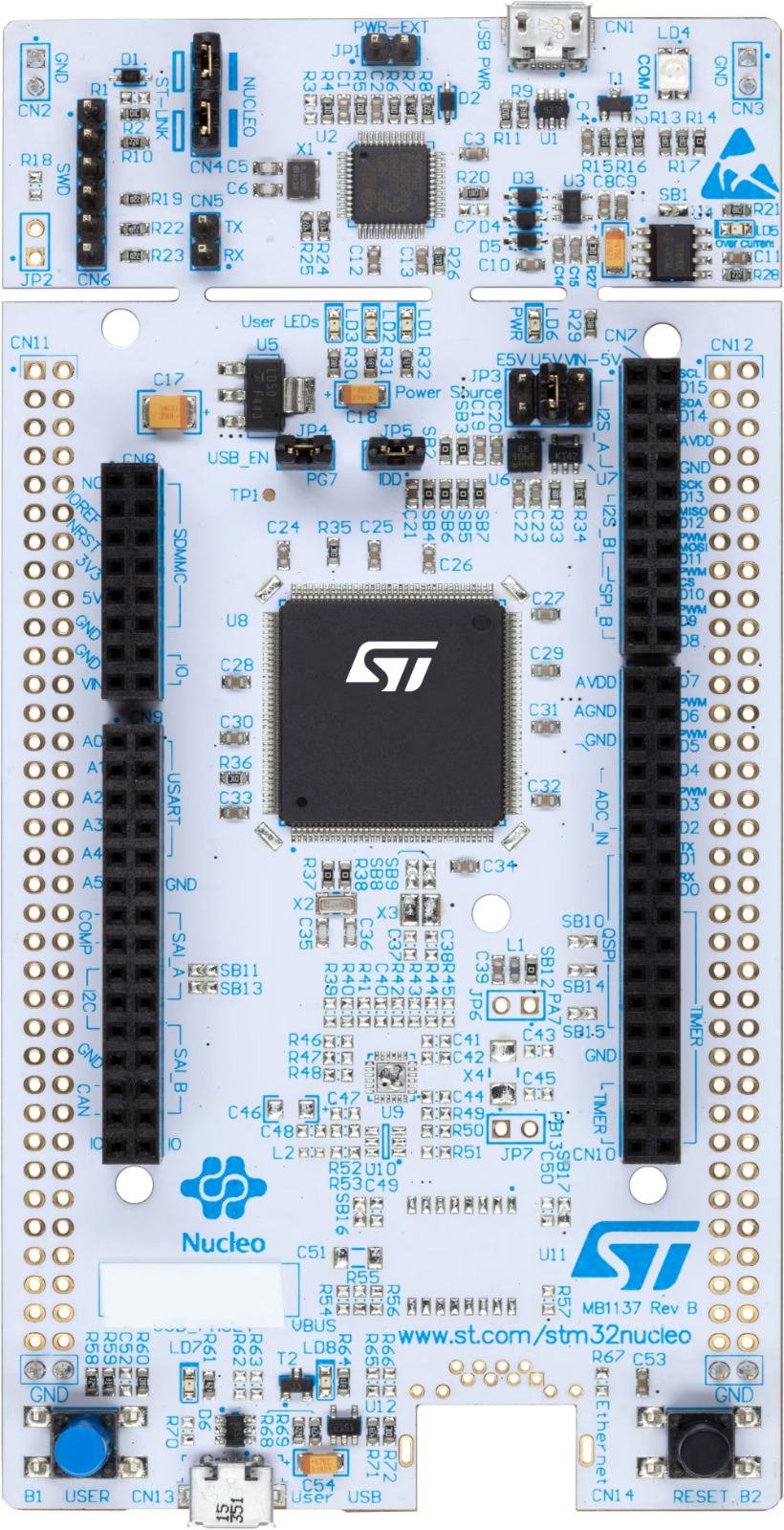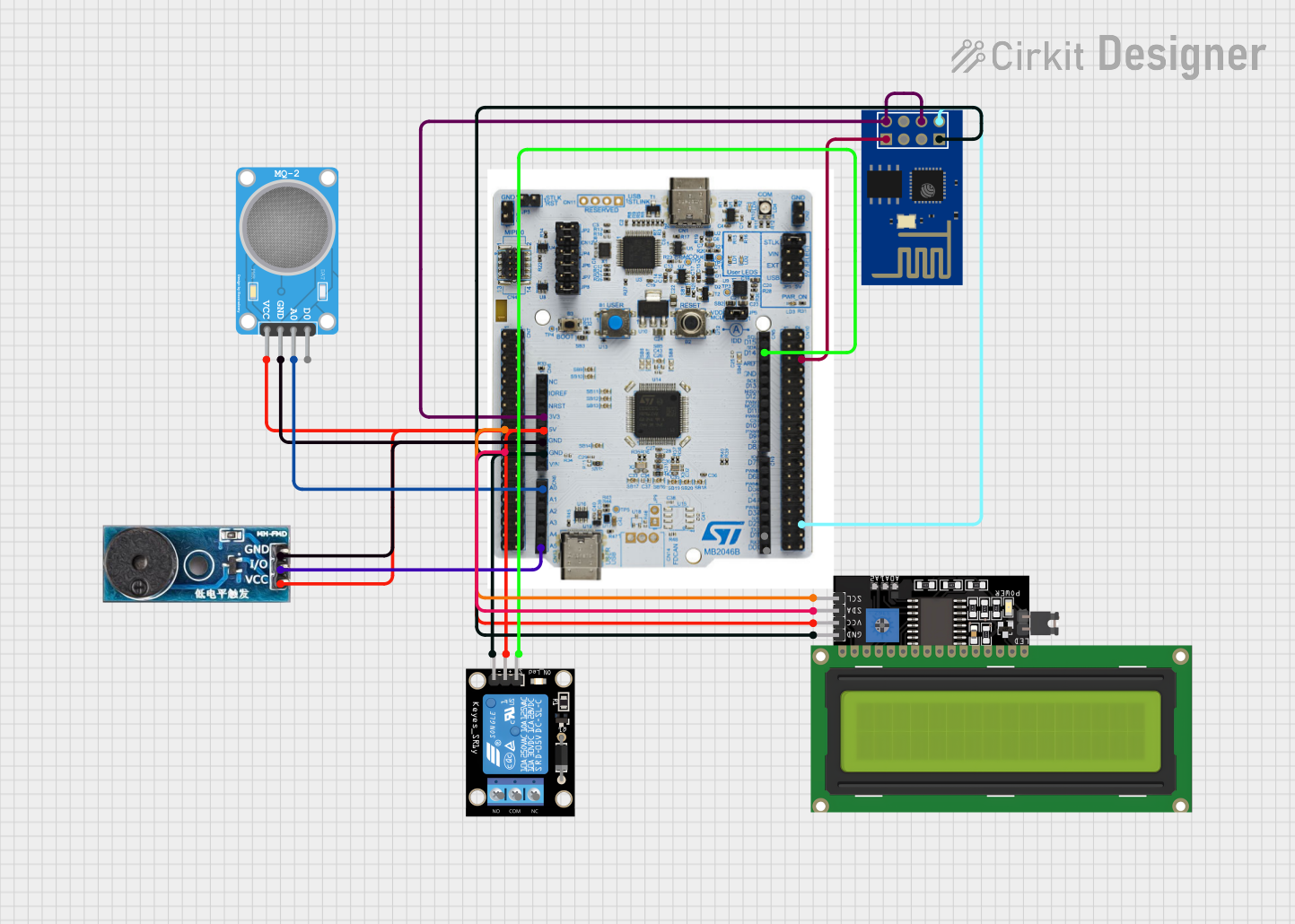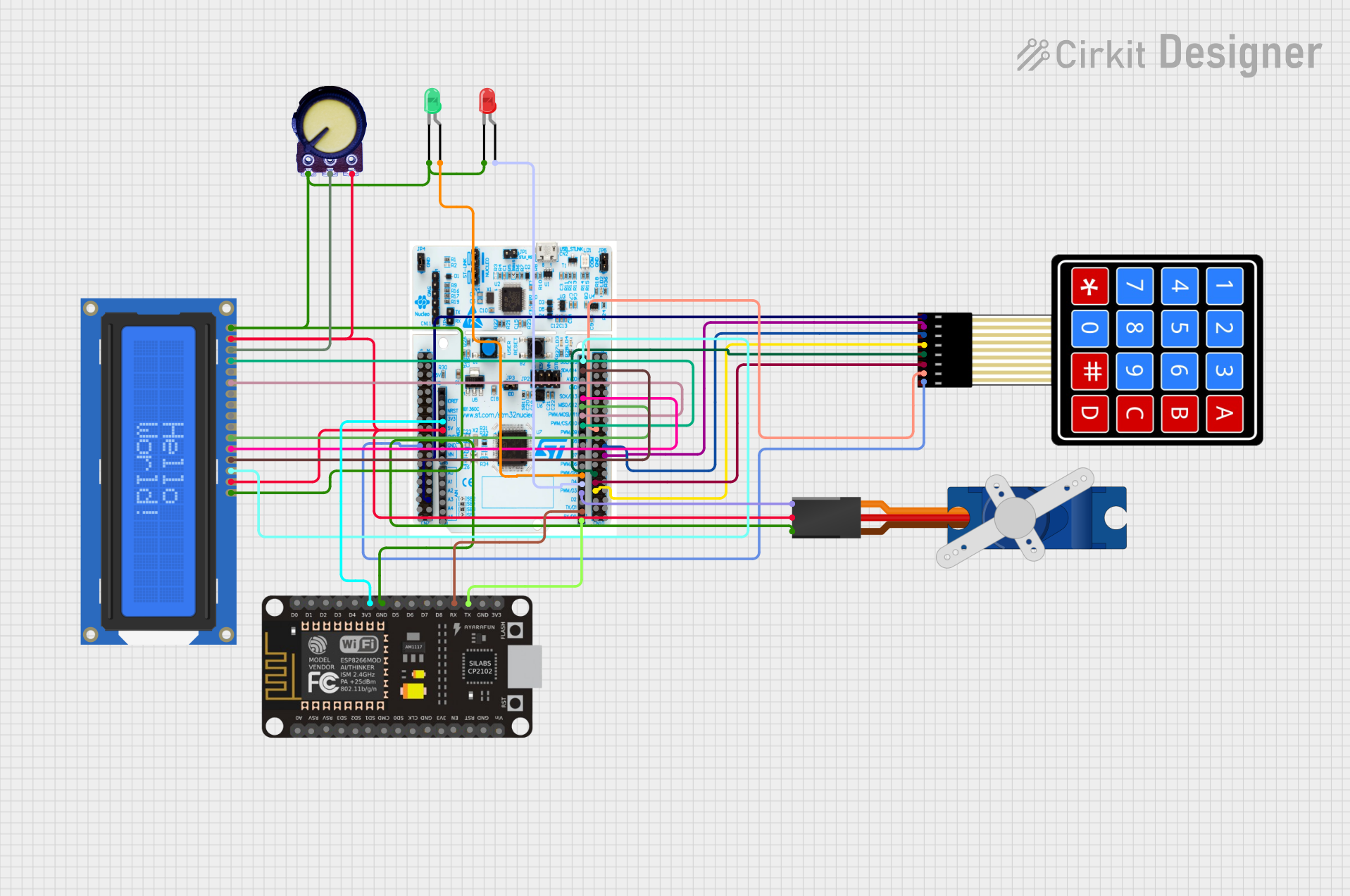
How to Use STM32 NUCLEO-F412ZG: Examples, Pinouts, and Specs

 Design with STM32 NUCLEO-F412ZG in Cirkit Designer
Design with STM32 NUCLEO-F412ZG in Cirkit DesignerIntroduction
The STM32 NUCLEO-F412ZG is a development board manufactured by STMicroelectronics. It features the STM32F412ZG microcontroller, which is based on the ARM Cortex-M4 core. This board is designed to provide a flexible and efficient platform for prototyping and developing embedded applications. It supports a wide range of connectivity options, integrated peripherals, and compatibility with Arduino and ST morpho connectors, making it suitable for a variety of projects.
Explore Projects Built with STM32 NUCLEO-F412ZG

 Open Project in Cirkit Designer
Open Project in Cirkit Designer
 Open Project in Cirkit Designer
Open Project in Cirkit Designer
 Open Project in Cirkit Designer
Open Project in Cirkit Designer
 Open Project in Cirkit Designer
Open Project in Cirkit DesignerExplore Projects Built with STM32 NUCLEO-F412ZG

 Open Project in Cirkit Designer
Open Project in Cirkit Designer
 Open Project in Cirkit Designer
Open Project in Cirkit Designer
 Open Project in Cirkit Designer
Open Project in Cirkit Designer
 Open Project in Cirkit Designer
Open Project in Cirkit DesignerCommon Applications and Use Cases
- IoT (Internet of Things) devices and applications
- Industrial control systems
- Robotics and automation
- Wearable devices
- Prototyping for consumer electronics
- Educational and research projects
Technical Specifications
Key Technical Details
| Parameter | Specification |
|---|---|
| Microcontroller | STM32F412ZG (ARM Cortex-M4, 100 MHz) |
| Flash Memory | 1 MB |
| SRAM | 256 KB |
| Operating Voltage | 3.3V (core), 5V (I/O via USB or external power supply) |
| Input Voltage Range | 7V to 12V (via VIN pin) |
| Clock Speed | 100 MHz |
| Communication Interfaces | UART, I2C, SPI, CAN, USB OTG, and more |
| GPIO Pins | 114 (including Arduino and ST morpho connectors) |
| Debugging Support | ST-LINK/V2-1 debugger/programmer integrated |
| Dimensions | 102 mm x 68 mm |
| Compatibility | Arduino Uno R3 headers, ST morpho extension headers |
Pin Configuration and Descriptions
The STM32 NUCLEO-F412ZG features multiple pin headers, including Arduino Uno R3-compatible headers and ST morpho connectors. Below is a summary of the pin configuration:
Arduino Uno R3-Compatible Header
| Pin Name | Functionality | Description |
|---|---|---|
| A0-A5 | Analog Input | 12-bit ADC channels |
| D0-D13 | Digital I/O | General-purpose digital pins |
| PWM Pins | D3, D5, D6, D9, D10, D11 | PWM output support |
| GND | Ground | Common ground |
| 5V | Power Output | 5V output from USB or external supply |
| 3.3V | Power Output | 3.3V regulated output |
| VIN | Power Input | External power input (7V-12V) |
| SDA/SCL | I2C Communication | I2C data and clock lines |
| TX/RX | UART Communication | UART transmit and receive lines |
ST Morpho Connector
| Pin Name | Functionality | Description |
|---|---|---|
| PAx, PBx, PCx, etc. | GPIO, ADC, PWM, etc. | General-purpose I/O and peripheral pins |
| VDD | Power Supply | 3.3V power supply |
| GND | Ground | Common ground |
| NRST | Reset | Microcontroller reset pin |
| OSC_IN/OSC_OUT | External Oscillator | Pins for external clock source |
Usage Instructions
How to Use the STM32 NUCLEO-F412ZG in a Circuit
Powering the Board:
- Connect the board to your computer via the USB Mini-B cable for power and programming.
- Alternatively, supply power through the VIN pin (7V-12V) or the 5V pin.
Programming the Board:
- Use the integrated ST-LINK/V2-1 debugger/programmer to upload code.
- Compatible with STM32CubeIDE, Keil MDK, IAR Embedded Workbench, and Arduino IDE.
Connecting Peripherals:
- Use the Arduino Uno R3 headers for shields and modules.
- Use the ST morpho connectors for advanced peripherals and GPIO access.
Running the Code:
- After uploading the code, the board will automatically reset and execute the program.
Important Considerations and Best Practices
- Ensure the input voltage does not exceed the specified range to avoid damaging the board.
- Use decoupling capacitors when connecting external components to reduce noise.
- Avoid shorting pins or connecting incompatible voltage levels to GPIOs.
- Use the ST-LINK utility or STM32CubeProgrammer for firmware updates and debugging.
Example Code for Arduino IDE
Below is an example of how to blink an LED connected to pin D13 using the Arduino IDE:
// Blink an LED on pin D13 of the STM32 NUCLEO-F412ZG
void setup() {
pinMode(13, OUTPUT); // Set pin D13 as an output
}
void loop() {
digitalWrite(13, HIGH); // Turn the LED on
delay(1000); // Wait for 1 second
digitalWrite(13, LOW); // Turn the LED off
delay(1000); // Wait for 1 second
}
Troubleshooting and FAQs
Common Issues and Solutions
Board Not Detected by Computer:
- Ensure the USB cable is properly connected and functional.
- Check if the ST-LINK driver is installed on your computer.
Code Upload Fails:
- Verify that the correct board and port are selected in the IDE.
- Ensure no other application is using the ST-LINK interface.
GPIO Pins Not Responding:
- Check the pin configuration in your code.
- Ensure the pins are not being used by other peripherals.
Power Issues:
- Confirm the input voltage is within the specified range.
- Check for loose connections or damaged components.
FAQs
Q: Can I use the STM32 NUCLEO-F412ZG with Arduino libraries?
A: Yes, the board is compatible with the Arduino IDE and supports many Arduino libraries.
Q: How do I reset the board?
A: Press the reset button on the board or use the NRST pin.
Q: Can I use external debuggers with this board?
A: Yes, the board supports external debuggers via the SWD interface.
Q: What is the maximum current output of the GPIO pins?
A: Each GPIO pin can source or sink up to 25 mA.
This concludes the documentation for the STM32 NUCLEO-F412ZG. For further details, refer to the official datasheet and user manual provided by STMicroelectronics.